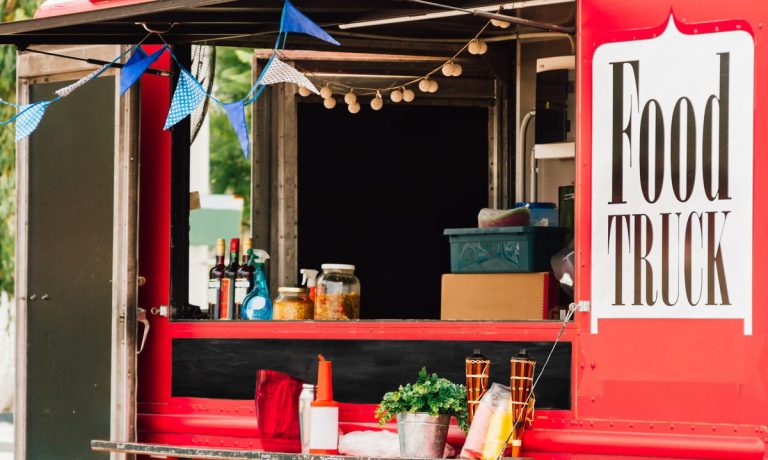
With the restaurant industry incontrovertibly changed by the events of the past couple years, some formats have taken a hit, while others are more relevant than ever.
With consumers eating more of their restaurant meals at home, independent full-service restaurants (FSRs) are facing new challenges, while concepts that depend more heavily on off-premises sales have new opportunities. As such, the food truck model is more relevant than ever.
One advantage of the food truck model is that it enables limited-time popups. Earlier this week, Screen Rant reported that a “Seinfeld”-themed food truck is coming to the Chicago area Friday (April 29) through Sunday (May 1). According to a tweet from mid-April from the official “Seinfeld” Twitter account, the truck is making its way through several major cities including New York, Los Angeles and Dallas. Additionally, NBC Chicago reports that items on the menu include muffins, pretzels and black and white cookies, among other foods that were featured in episodes of the iconic sitcom.
Major brands are getting into the food truck space, too. In late 2020, quick-service restaurant (QSR) chain Wendy’s launched its mobile units fulfilling delivery orders, so-called “Neighborhood Kitchens,” in Toronto in partnership with ghost kitchen company Reef Technology.
Similarly, North Palm Beach, Florida-based fast-casual chain BurgerFi, which has more than 60 locations across eight states, announced in late March that it is partnering with digital on-demand convenience service Gopuff to offer delivery through a food truck called “Fi on the Fly.”
Read more: Gopuff, BurgerFi Team on a Pilot Meal Delivery Program
Noting this demand for meals to go, Jet.com founder and former Walmart U.S. eCommerce president and CEO Marc Lore is also using the food truck model as a jumping off point for his next initiative, undertaken in partnership with former Walmart chief revenue officer Scott Hilton. The two have created Wonder Group, which also combines the food truck and ghost kitchen concepts, bringing hot food prepared in mobile kitchens to consumers’ doors.
Related news: Marc Lore’s Wonder Ghost Kitchen Concept One-Ups Aggregators With Doorside Food Prep
Indeed, consumers are seeking out off-premises restaurant meals at record rates. According to research from PYMNTS’ study “The Bring-It-to-Me Economy: How Online Marketplaces and Aggregators Drive Omnichannel Commerce,” which was created in collaboration with Carat from Fiserv, which drew from a census-balanced survey of over 5,200 U.S. adults, consumers are 31% more likely to order restaurant meals for pickup or delivery than they are to dine at a restaurant.
See also: Bring-It-to-Me Economy Ascends as Consumers Embrace Home-Centric Lifestyles
In a fall interview with PYMNTS, Vinay Menda, co-founder of small-format specialty coffee company Blank Street, noted that the combination of mobile order-ahead technologies with the food cart or truck format can lead to a more profitable food service model.
“You see similar models to our business across Asia, where the whole concept is to optimize the size of real estate and to use technology to enhance the ordering experience to lower the price of goods,” he said, adding that the mobile order-ahead option “optimizes the number of people you need in the store.”
You may also like: Next-Gen Food Carts Gear up to Take Over City Streets